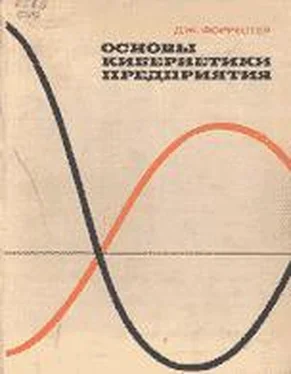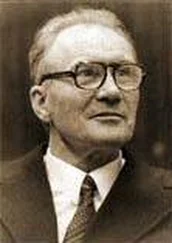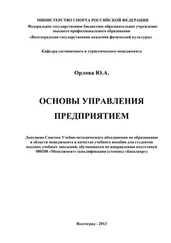9. Klein Lawrence R., Economic Fluctuations in the United States 1921–1941, Cowles Commission Monograph № 11, John Wiley & Sons, New York, 1950.
10. Koopmans Tjalling C, Editor, Statistical Inference in Dynamic Economic Models, Cowles Commission Monograph № 10, John Wiley & Sons, New York, 1950. Third Printing, July 1958.
11. Churchman C. West, Theory of Experimental Inference, The Macmillan Company, New York, 1948.
12. V i d a 1 e M. L. and W о 1 f e H. В., An Operations-Research Study of Sales Response to Advertising, Operations Research, Vol. 5, № 3, pp. 370–381 (June 1957).
13. Ballmer Ray W., Sloan Fellow at M. I. Т., 1959–1960, from the Kennecott Copper Corporation, S. M. Thesis, School of Industrial Management, Copper
Market Fluctuations: An Industrial Dynamics Study, 1960, i — ix plus 125 pages.
Fey W i 1 1 a r d R., The Stability and Transient Response of Industrial Organizations, S. M. Thesis, Department of Electrical Engineering, 1961, М.1.Т., 8 unnumbered front pages, 132 pages plus appendix of 22 pages. Hurford Walter J., Sloan Fellow at M.I.T., 1959—60, from the Westinghouse Electric Corporation, S. M. Thesis, School of Industrial Management, Application of Industrial Dynamics to the Growth of the Fuel Manufacturing Industry for Nuclear Thermal Electric Power Plants, 1960, i — vii plus 123 pages.
Katz Abraham, Sloan Fellow at M.I.Т., 1957-58, from the Radio Corporation of America, S. M. Thesis, School of Industrial Management, An Operations Analvsis of an Electronic Systems Firm, 1958, 7 front plus 109 pages. Kinsley Edward R., Sloan Fellow at M.I.T., 1958—59, from the Texas Instruments Company, S. M. Thesis, School of Industrial Management, The Managerial Use of Industrial Dynamics as Illustrated by a Company Growth Model, 1959, i — vii plus 180 pages. Raff Alfred I., Dynamics of the Tankship Industry, S. M. Thesis, Department of Naval Architecture and Marine Engineering, M.I.Т., 1960, 5 unnumbered front pages and 100 pages.
Schlager Kenneth J., Sloan Fellow at^M.l.T., 1960—61, from the AC Spark Plug Division of (general Motors Corporation, S. M. Thesis, School of Industrial Management, Systems Analysis of the Copper and Aluminum Industries: An Industrial Dynamics Study, 1961, i — vii plus 264 pages.
Walter Franklin, Sloan Fellow at M.I.Т., 1958— 59 from the Chrysler Corporation, S. M. Thesis, School of Industrial Management, An Analysis Relating Lead Time and Market Penetration in the Auto Industry, 1959, i — vii plus 125 pages.
14. R о b i n s о n D wight E., «Fashion Theory and Product Design*, Harvard Business Review, Vol. 36, № 6, pp. 126–138 (November-December 1958).
15. К a t z Abraham, An Industrial Dynamic Approach to the Management of Research and Development, IRE Transactions on Engineering Management, Vol. EM-6, № 3, pp. 75–80 (September 1959), Institute of Radio Engineers, New York.
16. В г о w n Robert G., Statistical Forecasting for Inventory Control, McGraw-Hill Book Company, New York, 1959.
17. W i n t e r s Peter R., Forecasting Sales by Exponentially Weighted Moving Averages*, Management
Science, Vol. 6, № 3, pp. 324–342 (April 1960).
18. Zannetos Zenon S., The Theory of Oil Tankship Rates, Ph. D. Thesis, Department of Economics and Social Science, Massachusetts Institute of Technology, September 1959, 12 unumbered front pages plus 299 pages.
19. Pierson Frank C. and others, The Education of American Businessmen, The Carnegie Series in American Education, McGraw-Hill Book Company, New York, 1959.
20. Gordon Robert Aaron and Howell James Edwin, Higher Education for Business, Columbia University Press, New York, 1959.
21. Forrester Jay W., Industrial Dynamics— A Major Breakthrough for Decision Makers, Harvard Business Review, Vol. 36, № 4, pp. 37–66 (July-August 1958).
22. P ugh Alexander L., Ill, DYNAMO User's Manual, The М.1.Т., Press, Cambridge. Mass., 1961» Available through The Technology Store, 40 Massachusetts Avenue, Cambridge, Mass.
23. Laning J. Halcombe Jr. and Bat-tin Richard H., Random Processes in Automatic Control, McGraw-Hill Book Company, New York, 1956.
24. Davenport Wilbur B. Jr. and Root William L., An Introduction to the Theory of Random Signals and Noise, McGraw-Hill Book Company, New York, 1958.
25. P h i 1 1 i p s A. W., Stabilisation Policy and the Time-Forms of Lagged Responses, Economic Journal (London), Vol. 67, № 266, pp. 265–277 (June 1957).
Л. И. Брежнев. Отчетный доклад Центрального Комитета КПСС XXIV съезду Коммунистической партии Советского Союза, «Материалы XXIV съезда КПСС», М., Политиздат, 1971, стр. 80.
Т. Л. Саати, Математические методы исследова ния операций, М., Воениздат, 1963.
Х. Ченери и П. Кларк, Экономика межотраслевых связей, М., Издательство иностранной литературы, 1962.
«Annals of the New York Academy of Sciences*, 1961, № 5.
Ж. Мот, Статистические предвидения и решения на предприятии, М., Издательство «Прогресс», 1966.
Важоньи, Научное программирование в промышленности и торговле, М., Издательство иностранной литературы, 1963.
См. сборник «Процессы регулирования в моделях экономических систем», М., 1961.
Ст. Бир, Кибернетика и управление производством, М., 1961.
Профессор Массачусетского технологического института Джей Форрестер родился в 1918 г. По образованию инженер-электрик. Работал в области гидравлических и электрических сервомеханизмов. Крупный специалист в области электронно-вычислительных машин.
California Management Reviews, 1965, № 3, p. 94.
См. Е. В. Roberts, The Dynamics of Research and Development, New York, 1964, p. XV.
См. «Management Reviews, Vol. 54, № 3, 1965.
В линейных системах используется понятие «наложение». В такой системе реакция на любое возмущающее воздействие происходит независимо от предшествующих и последующих воздействий; общий результат в точности равен сумме отдельных реакций системы. Реакция на ввод в систему не зависит от того, когда он произошел, если речь идет о линейной системе с постоянными коэффициентами (но не в линейной системе с изменяющимися во времени коэффициентами). В реальной линейной системе могут иметь место только колебания затухающие или постоянные по своей амплитуде; усиливающиеся же колебания в ней недопустимы, потому что они ничем не ограничены и будут возрастать до катастрофических размеров. Все это не относится к реальным промышленно-сбытовым и экономическим системам. Поведение многих систем, которые нас интересуют, обусловлено нелинейными явлениями.
Читать дальше








![Джей Джей Барридж - Секрет рапторов [litres]](/books/420944/dzhej-dzhej-barridzh-sekret-raptorov-litres-thumb.webp)



